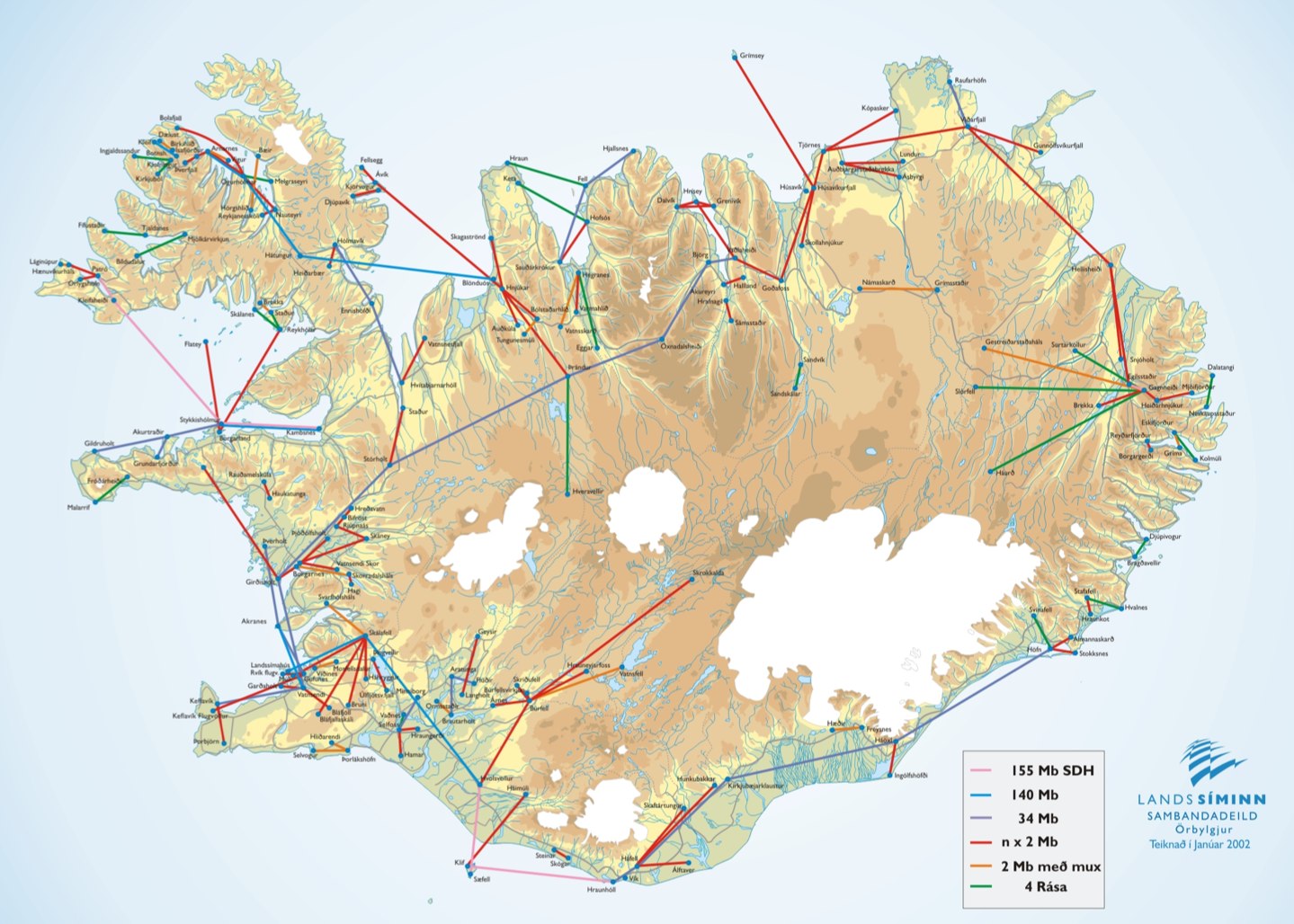
Network ACCESS
What are the availability, cost and quality of ICTnetworks, services and equipment?
Information Infrastructure.
Over the last few years, Iceland has spent considerable amounts of resources building and expanding its technology infrastructure. The country is almost entirely operated over a fiber-optic backbone that offers reliable direct international connectivity for telecom and data networks. The mobile phone market is also expansive, covering much of the country. In 1995, Iceland connected with CANTAT, the first fiber-optic cable between North America and Europe. Also, the same year, Iceland overhauled its telecom infrastructure and became the first country to have a completely digital telephone system.
Internet Availability.
Iceland boasts the highest level of Internet connectivity in the world and the second-highest level of mobile connectivity globally. It is said that about 82% of the countryís population have Internet access at home, school or work. This is due to Icelandís growing information technology industry. In 2007, Iceland was ranked #1 in terms of Internet users per capita, ahead of countries such as the USA, Sweden and the UK. Most Icelanders have access to broadband Internet connectivity due to the countryís heavy investment in a nationwide and submarine fiber optic network.
ISPs concentrate their broadband connection offerings in and around the city of Reykjavik and other smaller cities. While both, the government and private enterprise, have made significant investments in broadband connectivity outside the city, the connectivity is not as expansive as it is in the city centers. This is because Iceland has a very centralized population, making it easy to provide connectivity. Not having a sparse population throughout the countryside allowed the government as well as the privately owned ISPs to achieve a high impact at a moderate cost.

Internet Affordability.
Telephone charges are among the lowest in the OECD, and the number of Internet connected users in the country is the highest per capita in the world. Having such high penetration, provides for a strong IT foundation for businesses. The small, concentrated population and high GDP per capita make infrastructure build-out less problematic and adoption of consumer technology more financially accessible, than in many other nations. In the 1990s, the government deregulated the telecommunications industry and invited new vendors to the market. As the Internet blossomed, this led to increased consumer and business demand, which then resulted in increased competition.
Network Speed and Quality.
Most Icelanders have access to broadband connectivity. The few location which may not have broadband accessble, offer dialup access. Iceland has made major investment in laying out fiber-optic connectivity throughout the country and to the neighboring continents. Iceland has invested in submarine fiber-optic cable connectivity to numerous locations in Europe and also the United States. This positioned them as a major player in off-shoring and also connected them to the world with incredible flexibility. Due to the increased competition in the telecom arena and with a very small population to compete for, prices were driven down while quality and service were driven upward. As a result telecom prices in Iceland are some of the lowest in the world.

Hardware and Software.
Iceland is becoming known, if not already well known, as a prime data center off-shoring destination. Private enterprise has invested heavily in developing infrastructure to support such operations. The government has invested heavily in not only the technological infrastructure, but also public works such as the nationís power grid. Iceland is one of the few countries left in the world with untapped natural resources for energy. Their power grid is one of the most stable and expansive in the world. Currently, it is said that there are about 40 personal computers per 100 residents. With its close proximity to Europe and the United States, sourcing equipment as needed is not difficult. The government's heavy investment in infrastructure to support this growing industry has led to bustling of the local market for hardware and software.
Service and Support.
While the telecommunications market was officially deregulated in 1995, a law was enacted in January 2000, mandating the release of Iceland Telecomís telecommunications network to private providers. In combination with the competition offered by alternative networks, even greater competition has been stimulated in the market. Due to this competition, consumers have been receiving higher than average levels of customer service. Installation and support times have been reduced dramatically, while customer satisfaction and service quality have skyrocketed. This is due to the fact that Iceland has a very small population, competitors have to differentiate themselves in order to maintain or advance their position in a tight market. This applies pressure to provide the best service and support as possible in order to retain their client base.